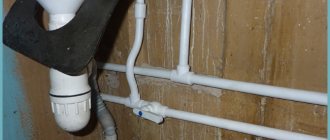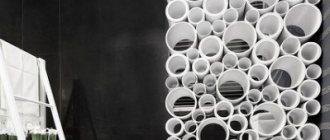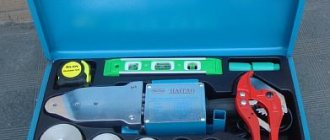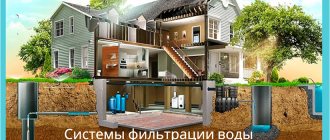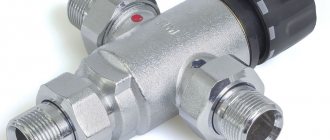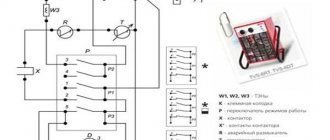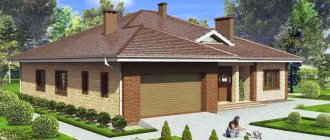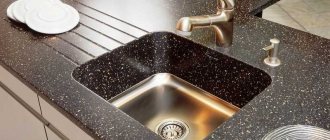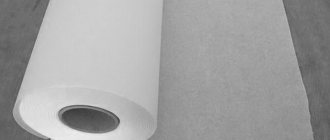Plastic (polymer) pipes are pipes made from plastic granules by extrusion using different technological methods depending on their type. Thermosets and thermoplastics are now quite in demand in the construction market due to their low cost and a number of positive characteristics. Plastic pipes are used in various fields of industry, for home repairs, and also in the household. They have proven their strength, ease of installation, durability, excellent thermal conductivity and endurance.
Main types of plastic pipes
The main raw materials for obtaining these high-tech building materials are polypropylene, polyethylene, and polyvinyl chloride. Pipes are used to transport gaseous and liquid substances of various pressures, chemical compositions, temperatures, therefore they are made of different strengths (flexibility), diameters and lengths.
When designing communications, wisely choose the type of pipe that has the necessary characteristics for its operation for a specific use. A huge advantage of all types of plastic pipes is their resistance to corrosion, which significantly extends their service life (at least up to 50 years).
To designate types of polymer pipes, a letter designation is used:
- polyvinyl chloride (PVC, PVK)
- polypropylene (PP, PP)
- polyethylene (PE, PE)
- made of cross-linked polyethylene (PEX)
- metal-plastic (PEX-AL-PEX)
Documentation
To produce plastic pipes, it is necessary to obtain a number of permits from regulatory authorities. If finances allow, you can use the services of specialized companies to collect the necessary documents and subsequent interaction with government agencies (fire inspection, Gosnadzorohrantruda, gas service, sanitary and epidemiological station, local authorities).
To avoid possible customer claims and sanctions from regulatory authorities, it is recommended to carefully comply with the requirements of GOST 18599-2001. In particular, transportation of finished PVC products can only be carried out in closed transport, in protective packaging. Transportation of plastic pipes weighing more than 1.25 tons and length more than 5.5 meters is not allowed.
Transportation of plastic pipes
Products should be stored away from sunlight, only in a horizontal position. The total shelf life of plastic pipes in a warehouse should not exceed one year.
Main characteristics of PVC pipes
The very first models of plastic pipes began to be made approximately 80 years ago in Germany, namely from PVC, a synthetic environmentally friendly product. It is perfectly processed up to 5 times without losing quality. Depending on the purpose, pipes are produced in different colors using pigments, different widths, shapes (smooth, square, corrugated).
PVC belongs to the group of thermoplastics and is classified according to properties such as:
- Diameter: small, medium, large (from 10 to over 225 mm).
- Bend radius: ultra-flexible, flexible, rigid.
- Installation type: indoor, outdoor, underground.
- Working pressure: for a discharged environment, pressure, non-pressure.
Characteristics of PVC plastic pipes:
- Durable synthetic material that allows you to build a variety of sealed piping combinations.
- Relevant in earthquake-prone areas with moving soils.
- The products are light in weight, have an affordable price on the construction market, and have a long service life.
- Excellent dielectric.
- Pipes are easy to cut, quickly installed, and bend obediently.
- High level of protection against internal deposits, microbial growth, rotting and corrosion, does not condense.
- Used in the chemical industry (the material can withstand chemical and acidic environments), food industry, for cold and hot water supply, sewerage, and for laying (insulating) electrical cables.
- The material is resistant to UV radiation.
- Environmentally friendly for people and nature.
- Low flammability.
Methods for installing plastic pipes made of polyvinyl chloride
Structures made of PVC plastic pipes are mounted using a ready-made socket, gluing or an additional fitting. The socket has a sealing ring made of special rubber, which allows the pipes to be hermetically connected to each other. If necessary, fittings are used to connect a plastic pipe to a metal pipe.
The high thermal conductivity of polyvinyl chloride pipes sometimes requires additional insulation of the line. When purchasing pipes, be sure to study the characteristics and performance capabilities of the product.
Staff
Each production line must be serviced by two or three operators. It is also necessary to include a technologist, general workers and a manager in the company’s staffing table.
Salaries should be based on the average tariffs in force in the region. As a rule, the salary of a manager is set in the region of 50-70 thousand rubles, a technologist - 40-50 thousand, a production line operator - 25-30 thousand rubles.
PVC pipe production line personnel
If the company operates in shifts, it will be necessary to hire several work teams that will work on schedule. Here you need to remember that it is not enough to form a team, you also need to maintain it. To do this, it will be necessary to provide employees with social guarantees, ensure normal working conditions and develop an incentive system.
Polypropylene pipes, general characteristics
Polypropylene pipes (PP) are plastic pipes with an aesthetic appearance and high anti-corrosion properties, used for heating, technical and food water supply. The environmentally friendly material is used for heating structures in residential premises for various purposes (homes, schools, hospitals). It is used to create a “hot floor” heating system.
If necessary, aluminum foil (reinforcement) is used, which enhances the properties of the pipe at high heating temperatures of the internal liquid, or pipes reinforced with glass fiber (three-layer) are used. For agriculture, sewerage, drainage, transportation of aggressive chemicals or compressed air, special PP pipes are manufactured with a current diameter of up to 160 mm and thicker walls.
The main advantages of PP pipes:
- They tolerate difficult transportation well, have increased strength and frost resistance.
- Installation is very simple, convenient assembly of structures.
- Very affordable price.
- Withstands internal heating up to +95C.
- The material can withstand high pressure.
- Operating temperature +65C.
- Excellent vibration insulation and sound insulation material.
- PP sewerage pipes have increased rigidity.
- Long warranty period (at least 50 years).
To build a drinking water pipeline, carefully study the characteristics of the product. If you purchase polypropylene pipes for heating, keep in mind that at high internal temperatures the pipes can expand. Use that subtype of PP pipes that has special performance indicators.
Installation of plastic pipes made of PP
The durability of communications depends on the quality of installation work. During installation, you may need additional elements: branching crosses, tees, adapters, plugs, bushings, clips, couplings, etc. Polypropylene pipes are connected using a soldering iron of the required power and welding. Do not overheat the attachments above the required temperature.
The pipe cut before welding must be smooth, it must be cut at a right angle. Be careful not to deform the pipe. Prepare reinforced pipes for welding according to the instructions. Aluminum must be cleaned from the edge. Do not use gasoline or solvent to degrease sections of polypropylene pipes and fittings. Use special trimming shears for plastic pipes.
If you decide to carry out installation without the help of professionals, then install the welding device only on a flat, stable surface and put attachments on the device when it is not turned on. To avoid injuring your hands from the high temperature of the device, protect yourself with construction gloves.
Selecting a room
A workshop with an area of 100-300 square meters, located outside the city, is suitable for locating production facilities. An important point here will be the availability of convenient access for special equipment, trucks and cars.
Production workshops must be connected to the main utility networks, ventilation, air conditioning and heating systems, security and fire alarm systems.
Additionally, you need to take care of the arrangement of utility rooms and locker rooms for technical staff and an office for administrative workers.
Features and characteristics of PE plastic pipes
The main raw material for the production of polymer tubes from polyethylene is oil (petroleum ethylene). Smooth, corrugated plastic pipes made of PE are used for laying internal and external communication systems for various purposes. This type of polymer pipes is the most resistant to low temperatures down to -20C.
The main advantages of polyethylene pipes:
- Elasticity, strength.
- Resistance to aggressive environments.
- Dimensional stability over a relatively wide temperature range.
- It is produced with a diameter of up to 1600 mm (pressure) and can withstand high pressure.
- Heat resistant, anti-corrosion.
- It has several classifications with different characteristics (PE 63; PE 80; PE 100).
- No scale formation.
- Virtually no additional maintenance is required.
- The lightest in weight compared to other plastic pipes.
- Low cost, easy to install.
- Pipes do not burst when the liquid inside freezes and are capable of self-healing after the temperature normalizes.
- Can be reused.
- There are detachable and non-detachable ones.
They are used for water supply networks (food, industrial), heating, sewerage, gas supply, and transportation of various chemicals. Mounted by welding (butt, coupling) or using a compression fitting, steel flanges.
Video description
The video describes in detail what markings polypropylene products have and how plastic pipes are installed and soldered:
Polyethylene pipes
They are made from polymerized ethylene and have all the advantages of plastic pipes, but they have one distinctive feature - high plasticity. Products are sold in rolls. Using them, you can construct engineering communications of complex shapes. They cannot transport hot water (it softens the polyethylene, which can cause the line to rupture). Low-pressure polyethylene pipes (LDPE) are ideal for assembling drinking water supply systems; water in them can be transported under a pressure of no higher than 10 atmospheres.
Roll of polyethylene products Source i4.photo.2gis.com
New generation PEX pipes made of cross-linked polyethylene
The technological process for producing cross-linked polyethylene is carried out in several ways: chemical and physical. By adding certain catalysts that change the structure of intermolecular compounds (network), which change the quality of the material, giving it additional properties:
- They make it more flexible or harder and more durable.
- They do not react with acids, alkalis, or most organic solvents.
- Withstands large temperature changes up to +100C and does not crack.
- Do not decompose in biological environments.
- They have good elongation and tensile strength.
- Not subject to corrosion and plaque accumulation.
- High dielectric properties.
- Relevant for seismic zones due to the creation of durable inter-pipe combinations.
- High sound and thermal insulation, minimal vibration.
- Used for laying systems in the air, underground.
- Additional protection against the influence of oxygen and UV.
Pipes are recognized as a reliable insulating material for high voltage cables. They produce especially durable pressure pipes for water supply in multi-storey buildings. Pipes made of cross-linked polyethylene are widely used to create various heating systems, transport gas, chemicals and other liquids.
The difference between pipes made from this material and other plastic pipes is that PEX can be transformed. The material perfectly restores its previous shape if temperature changes or internal pressure occur in the system.
Installation of thermoplastic PEX pipes
The flexibility and lightness of the pipe allows installation in very difficult conditions using the pulling method. Structures are mounted using fittings using methods such as:
- Professional electric welding installation is the most durable.
- Non-compressive using press fittings, expander.
- Compression method using compression fittings.
Do not use open flame during installation. If necessary, pre-fix the pipes with brackets, use gaskets and insulation. Use fittings made of the same material as the pipe. Avoid deformation of fittings and pipe cuts.
Estimated price of production line
Here it is worth considering the prices directly for the lines of the extruder and auxiliary equipment for the production of HDPE, PVC and other pipes, since these technological units are the main ones.
You can get acquainted with the estimated cost of lines for the preparation of plastic waste in the relevant sections on equipment in this article.
The leaders on the Russian market are representatives of Chinese companies. European models are also widely represented. For a manufacturer with minimal experience, their choice should be Asian-made machines.
The line price usually includes:
- extruder (single screw or twin screw);
- die (of a given diameter);
- calibrator;
- cooling, pulling and cutting devices.
| Trade company | Price |
| AsiaPlast (Dzerzhinsk) | 35-120 thousand dollars |
| InsTerra (Chelyabinsk) | 980 thousand rubles |
| TechnoPlast (Tomsk) | 3650 thousand rubles. |
| World Equipment (Podolsk) | 5585 thousand rubles. |
| Winter Delta (Krasnodar) | 3650 thousand rubles. |
Such a wide range of prices is explained by the different productivity of the machines. Conventionally, more expensive machines produce a larger volume of finished products per hour (in linear meters) and are more automated in control.
The presented equipment is quite versatile and can be used for the production of polyethylene and other pipes of various diameters, as well as for the production of other molded products.
Characteristics of metal-plastic pipes
Pipes are produced by combining layers of aluminum with plastic and have additional flexibility. Low cost, light weight, aesthetic appearance, durability, and the ability to control pipe stretching due to metal allow the use of MP systems for laying various communications and pipelines for transporting substances (gas, hot and cold water, compressed air, chemicals).
Installation of PEX-AL-PEX pipes is carried out using compression and press fittings:
Each type of polymer pipe has its own operational characteristics, rules of transportation and storage, and installation methods. Proper handling of pipes made from high-tech polymers will allow you to create durable, inexpensive and safe for human life, the ecological environment, and new generation communications.
Scheme for obtaining a certificate of conformity
Some types of PVC pipes are subject to mandatory certification. This process is regulated by more than 20 state standards. Those types of products that are not subject to mandatory certification undergo the procedure at the request of the company that opened production. This improves the company’s image and makes it possible to participate in serious tenders for the purchase of materials in the B2B sector.
First, an application is completed. Next, a complete package of documentation and a correctly completed application is submitted to the accredited certification body. This documentation includes:
- Statement.
- Extract from the company's statutory documents (TIN, OGRN, OKVED codes).
- Basic regulatory and technical documentation (GOST, TU).
- Detailed description of the product (material, article number, scope of application).
- Sometimes they require a certificate of the manufacturer’s personnel.
Each region has a state center for metrology and certification. Initially, it is better to contact them: they will provide you with the entire list of actions. Product samples undergo laboratory tests. Their results are assessed by experts, and a corresponding certificate is issued.
What is used as raw material
To produce pipes in an extrusion line, synthetic granulated PVC resin is used as a raw material. It can be of several types according to the method of polymerization of polyvinyl chloride. Suspension PVC resin is used to load extrusion lines.
In Russia, this chemical synthesis product is produced by several enterprises: Plastkard CJSC (Volgograd); OJSC Sayanskkhimplast (Sayansk-1); as well as CJSC "Kaustik" (Sterlitamak).
There is a shortage of domestic raw materials on the market, so manufacturers often resort to purchasing Chinese resin. The products of Hungarian and Polish factories are of very good quality.
Some lines for the production of PVC pipes successfully use recycled materials, such as crushed window profiles. In this case, it is necessary to control the viscosity of the melt by adding plastic compounds or adjusting the temperature.
Auxiliary substances for the polymer mixture
To achieve the required qualities during the extrusion process, special additives are introduced into the raw materials. The additive formula is prepared by the manufacturers themselves. The following are the chemical additives:
- Various stabilizers that give stability to the shape of the product.
- Plasticizers to regulate the viscosity of the material.
- Catalysts for controlling the polymerization reaction.
- Dyes.
The recipe is selected individually for each line according to the process conditions. Therefore, to maintain a constant level of product quality, it is advisable to use raw materials and additives from the same manufacturer.
How is product quality controlled?
Factories are equipped with special laboratories to monitor the quality of their products. They are equipped with measuring equipment and test benches. Testing of PVC pipes is carried out no earlier than 16 hours after the end of the production process.
The following parameters are tested:
- Geometric dimensions. The test sample is compared with the standard, and the wall thickness is measured using a special measuring device.
- Impact resistance test. The samples are kept at a temperature of 0 ± 1 °C for at least an hour and then subjected to 25 shocks for 30 seconds.
- Determination of thermal deformation of a product under the influence of compressed air. Samples are subjected to internal pressure testing at a temperature of 95 °C for 165 hours or until failure is detected.
- Measuring the elongation of a pipe after heating it. Marks are applied to the outer surface of the heated sample. It is exposed to heat for 40 minutes at a temperature of 150 °C, then the distance between the marks is recorded and compared with the original data.
As samples, we take 200 mm sections of PVC pipe, the ends of which are cut exactly perpendicular to the location of the axis of the product. On the eve of the tests, they must be in normal conditions at an air temperature of 25 ° C for two hours.
